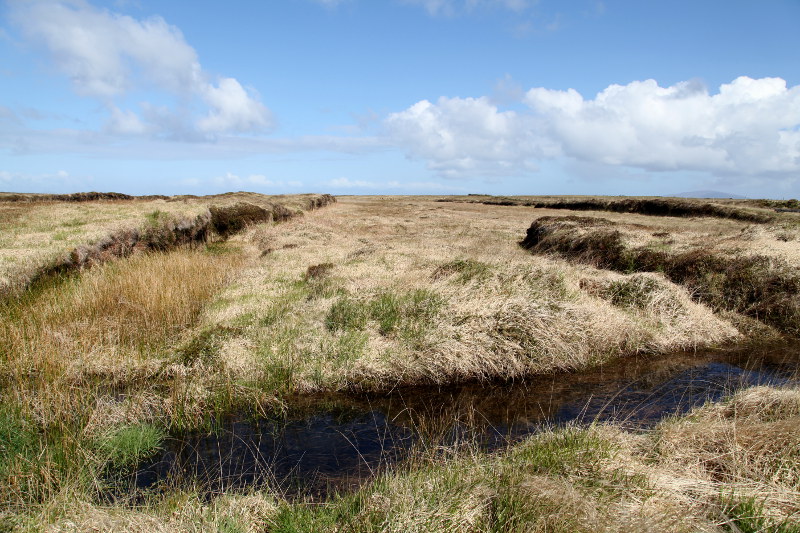During one of our driving adventures on the rugged roads of Valentia Island, La Niña and I were signalled to stop by a man walking his dog. Always up for a conversation with a local, I stopped to see what the man had to say… half of which I understood.
Interspersed amongst very very thick slang (thicker than Newfoundland-ese), I roughly heard: must-see, no tourist knows, pass the abandoned pub, drive to the barn, watch out for the giant puddle, park by the deep crack in the road, walk past the cows, follow the sheep, and you will find something I couldn’t understand.
I thanked the man and drove on. From the back of the car La Niña asked in a confused voice, “what did he say?”
“He said there’s a mystery adventure ahead that involves puddles and mud.”
I followed the direction that he indicated and miraculously found an abandoned pub (what? strange place for a pub… in the middle of a field), a barn, a giant (and deep looking) puddle (thanks for the warning dog-walking man), and a crack in the road followed by cows and sheep.
And, what did we find at the end of the muddy path that had us hopping over streams, past sheep, and over a fence? St. Brendan’s Well.
Bréanainn of Clonfert or St. Brendan is one of the Twelve Apostles of Ireland and a legendary 6th-century Irish explorer (long before Columbus). He’s also known as Brendan the Navigator and is the subject of many Irish tales and literature.
A handmade document at the well states: Valentia has a number of holywells associated with early Celtic Saints and their churches, to which people make pilgrimages and still do. This involved making rounds (walking sunrise around the cross, well or church) while saying a specified number of prayers… Tradition makes St. Brendan sail to Valentia across Dingle Bay, scale the cliffs near Culloo, just in time to baptize and anoint two dying pagans.
The weathered stone Celtic crosses nearby are called the Tobar olla Bréanainn. I don’t know what that means but the Internets say it means the well of St Brendan’s anointing. However, I’m not entirely sure about this because the Irish word olla means wool.
A better explanation of the Holy Wells of Ireland can be found here and here.
